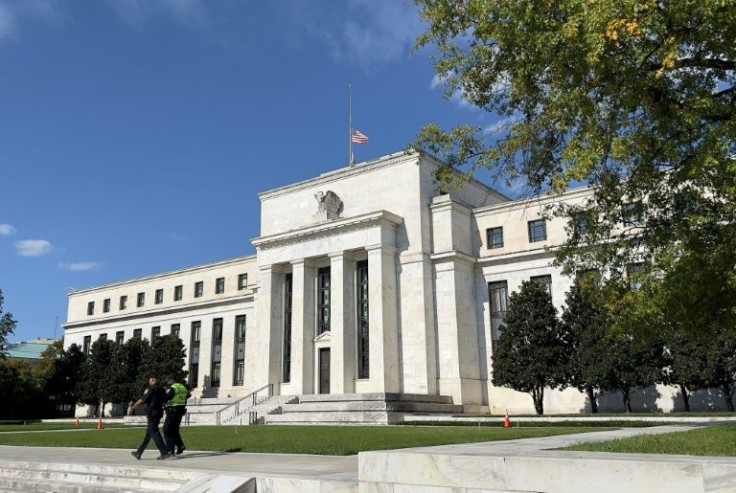US Fed Opens Policy Meeting Focused On Inflation Threat
The Federal Reserve opened its two-day policy meeting on Tuesday, focused squarely on how to address the troubling US inflation threat.
Fed Chair Jerome Powell has signaled that the central bank will pull back on its pandemic stimulus measures more quickly, which would put it in position to raise interest rates and try to quash the wave of rising prices that have hit American households.
In addition to the political damage inflation has done to President Joe Biden, investors are getting nervous about rising interest rates and a resurgence of Covid-19 cases due to the new Omicron variant.
The concerns sent Wall Street stocks lower for a second straight session on Tuesday, ahead of the conclusion of the Federal Open Market Committee's (FOMC) meeting Wednesday, when policymakers are expected to announce the Fed will further slow its monthly bond purchases.
That will put it on a pace to end the program in March, about three months earlier than initially planned, and leave the central bank poised to act directly against inflation by hiking the benchmark borrowing rate as early as May.
Powell for months has argued that most of the price increases were due to temporary pandemic-linked factors that would dissipate, but in late November he acknowledged that inflation could be "persistent."
Annual consumer price inflation hit a nearly 40-year high of 6.8 percent in November, with data showing the increases continuing to spread beyond autos and energy to food and housing.

Policymakers on Tuesday got more data showing the price pressures building in the pipeline, when the Labor Department reported that the producer price index surged 9.6 percent in the 12 months ended in November.
It was the biggest jump since the government began calculating the index in November 2010, pushed by increases in a broad array of goods and services, which could spread to consumers.
Though economists believe inflation may have peaked, that does not ease the pressure on the Fed to act to prevent the price increases from becoming a self-fulfilling prophecy, especially as wages rise amid a drive by employers to fill millions of open positions.
"While we continue to expect producer prices to reach an apex in (the fourth quarter), persistent supply headwinds will keep input and transportation costs sticky and only allow for a gradual moderation in price," said Mahir Rasheed of Oxford Economics.
Powell in testimony before Congress last month repeated his pledge that policymakers "will use our tools to make sure that higher inflation does not become entrenched."
He will have a chance to elaborate in his press conference following the meeting on Wednesday.
The FOMC also will release its quarterly economic forecasts, which are expected to show committee members shifting to a more aggressive stance on interest rate hikes.
Economists expect central bankers to lean towards three or even four hikes in 2022, rather than just one, as projected in September.
But the rapid spread of the Omicron variant of Covid-19, which has caused some countries to reimpose restrictions, is casting a shadow over the economic outlook that could complicate the job of the central bank.
"Omicron has clearly added a huge cloud of uncertainty over the outlook for the economy in the coming months just as many countries were preparing for tighter monetary policy," Oanda analyst Craig Erlam said.
© Copyright AFP 2024. All rights reserved.





















